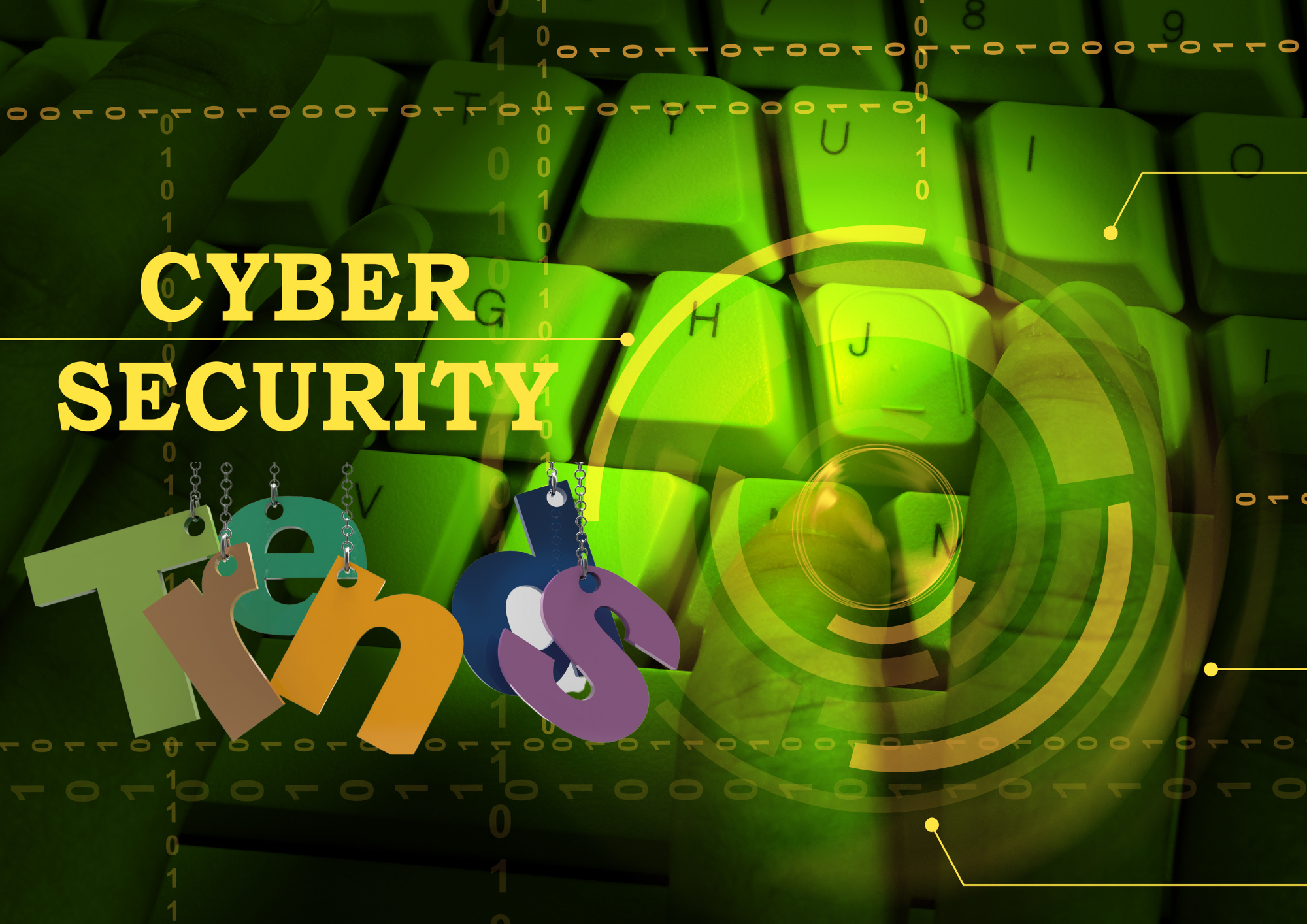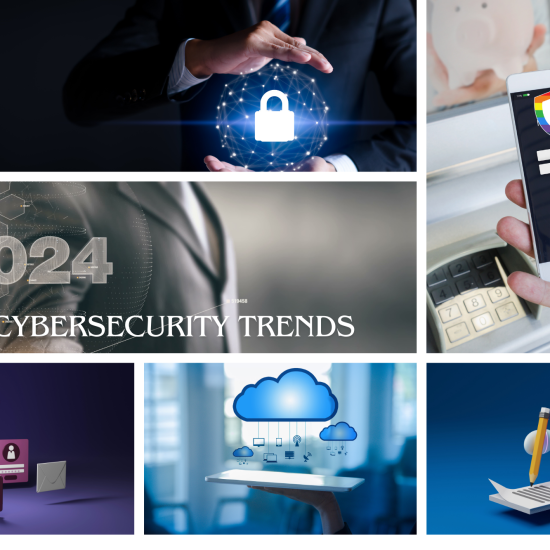Top cyber security trends for 2023
With the rapid advancement of sophisticated technology came the ever-evolving cybersecurity threats that are catching up faster than projected. The results can be devastating for both individuals and companies. The impact of the pandemic and the rapid acceleration of digital initiatives in a short time forced organizations to control and manage disruptions to their business. Figure 1 depicts how cyber incidents and breaches are resulting in negative consequences for organizations.
According to Deloitte’s 2023 Global Future of Cyber Survey, Figure 1 depicts operational disruption continues to be the most significant impact of cyber incidents, although the loss of revenue and loss of customer trust jumped in the rankings—to second and third place—with 56% of respondents reporting that they suffered related consequences to a moderate or large extent.

In this article you will read about:
Top cybersecurity trends for 2023
- Mobile Devices
- Cloud security
- IoT
- Data Breaches
- Ransomware
- State-Sponsored Cyber Warfare
- Insider Threats
- Work From Home (WFH) cybersecurity as a company priority
- ML and AI utilization from both ends
- Geo-targeted phishing attacks
How Rainbow Secure can help.
Here are the top cybersecurity trends for 2023.
- Mobile devices as an easy target
Among the top cybersecurity trends for 2023 are mobile device and mobile application security. Today, most businesses are turning to offer their service on mobile which has turned it into a haven for hackers to exploit the lack of cybersecurity practices implemented for mobile devices and apps. Mobile security is complex because of the large number of potential attack vectors – devices can be targeted at multiple levels:
Applications: Malware can be developed and deployed as malicious apps that users unwittingly install on their devices. Mobile security solutions should be able to detect and block downloads of these malicious apps.
Network: Mobile devices and the legitimate apps that run on them can be targeted at the network level. Man-in-the-Middle, phishing, and other attacks take advantage of network connectivity to steal data or deliver malicious content. Mobile security involves blocking these network-level attacks.
OS: Both iOS and Android operating systems can contain exploitable vulnerabilities, which are used for jailbreaking/rooting devices either by users or by malware. This provides an attacker with advanced permissions on the device, breaking its security model. Mobile security incorporates real-time risk assessments, configuration monitoring, and other tools to detect the exploitation of device vulnerabilities.
Besides the mentioned data breaches, a popular method among attackers involves mobile application manipulation through techniques such as reverse engineering and application hooking. This allows the hacker to gain insight into the app’s source code and design a fake application which is later published to exploit user credentials – this is just a single instance of several examples of how things can go south.
2) Cloud security is a must
Another cybersecurity trend to follow is cloud security. Cloud management solutions have come a long way, and companies and businesses are migrating to the cloud. It is a great opportunity for businesses to increase scalability and lower operational costs. However, the security aspect of a cloud-managed system is still questionable. Most cloud services are not providing businesses with authentication best practices, secure encryption, and audit logging. Weak cybersecurity infrastructure makes cloud services a prime target due to the low efforts necessary to bypass internal policies.
3) IoT: Connectivity is a new threat
The world is increasingly interconnected, bringing about new risks alongside new growth opportunities. The number of IoT-connected devices in 2022 was 13 billion, while the projected number for 2025 is 19 billion. This rapid growth of unsecured devices in terms of cybersecurity – opens doors for hackers by constantly adding unprotected endpoints which pose a threat to network security. The aftermath of a hijacked IoT device can range from scenarios such as eavesdropping and espionage to serious health risks. As, in healthcare, remotely controlled devices such as pacemakers and insulin shots can be hijacked and manipulated from the attacker’s side.
4) Data Breaches: Prime target
Among the top cybersecurity trends for 2023 are the inevitable data breaches. Data is the number one reason cyber-attacks take place. Protecting the organization’s data is a priority in terms of cybersecurity. Any present system or application flaws, such as bugs and unprotected endpoints, pose a vulnerability threat to your company’s sensitive information. Building a top cybersecurity infrastructure can only protect your data, including intellectual property, personally identifiable information (PII) of a user, and confidential data of company or enterprise.
5) Targeted Ransomware
Another important cybersecurity trend that can’t be ignored is targeted ransomware. Especially in developed nations’ industries rely heavily on specific software to run their daily activities. Ransomware is a form of malware designed to encrypt files on a device, rendering any files and the systems that rely on them unusable. Malicious actors then demand ransom in exchange for decryption. Ransomware incidents can severely impact business processes and leave organizations without the data they need to operate and deliver mission-critical services. The economic and reputational impacts of ransomware incidents, throughout the initial disruption and, at times, extended recovery, have also proven challenging for organizations, be they large or small.
6) State-Sponsored Cyber Warfare
State-sponsored cyber-attacks will be directed toward both competing governments as well as businesses that interfere with the state’s end goals. Among data breaches and ransomware attacks, espionage through spyware will be another tool for accessing sensitive information.
State-held elections will also be a target for cybercriminals. The increasingly digital nature of how elections are conducted allows for data manipulation. Following, misinformation present on social media in the form of bogus campaigns using deepfake can cause the public to quickly switch sides.
7) Insider Threats
Human error is still one of the primary reasons for data breaches: 95% of cybersecurity breaches are caused due to human error (WEF). Any bad day or intentional loophole can bring down a whole organization with millions of stolen data. A report by Verizon on data breaches gives strategic insights on cybersecurity trends that 34 percent of total attacks were directly or indirectly made by employees.
Simple steps like taking the time to set up multi-factor authentication and keeping good password hygiene or adopting the latest and innovative Rainbow Secure multi-layer graphical authentication solution can go a long way in preventing a cybersecurity attack. Also, being aware of phishing attacks and social engineering scams can help us take better precautions and avoid falling victim to cybercriminals.
8. Work from Home (WFH) cybersecurity as a company priority
With the global switch from offices to our work-from-home setup, security experts and IT departments are facing a challenge in terms of securing devices remotely. This is putting pressure on those in charge of implementing cybersecurity best practices for a remote workplace.
Falling victim to a social engineering scam is making another frequent occurrence. Impersonating a colleague or a C-level executive opens doors for hackers to manipulate unsuspecting employees into revealing their passwords and sensitive company information.
Also, the remote workplace does not guarantee a safe physical environment for the devices. Working from cafes and shared coworking places combined with leaving the device unattended might result in theft.
9. ML and AI utilization from both ends
Machine learning and artificial intelligence are quickly becoming a part of all market segments. These trends did not bypass either cybersecurity experts or the bad guys. Hackers have been leveraging automation for years, but today, they have access to tools much more powerful.
With AI being introduced in all market segments, this technology, combined with machine learning, has brought about significant changes in cybersecurity. AI has played a critical role in the development of automated security systems, face detection, natural language processing, and automatic threat detection. However, it is also being used to create smart malware and attacks to circumvent the most recent data security protocols. AI-powered threat detection systems can predict new attacks and alert administrators immediately if there is a data breach.
10. Geo-targeted phishing attacks
Falling under the social engineering category, phishing campaigns are proving to be the most successful method of cyber fraud. Moving away from individuals, hackers are now targeting businesses in the hopes of gaining access to their networks and, finally, their data and are paying more attention to detail, and are carefully crafting their phishing strategy. These phishing emails have a more personalized and geo-targeted approach. This allows hackers to get specific and, thus, gain the victim’s trust more easily.
To bypass such sophisticated phishing attempts, companies must devote their time to building cybersecurity awareness and training their employees to recognize signs of a phishing scam and conducting simulations and mock drill from time to time.
To wrap up our cybersecurity trends in the 2023 list, it is safe to assume that cybersecurity should be a part of strategic planning rather than just a process flow triggered in case bad things happen. Thinking proactively about your cybersecurity efforts and putting emphasis on continuous education and awareness building within the company will go a long way. Also, most important is the necessity to build cybersecurity awareness into both our personal and business culture. It is no longer enough to rely on IT support for security matters. The awareness needs to start with proper cybersecurity training, enabling the average user to recognize a potential cybersecurity threat and act accordingly.
How can Rainbow Secure help:
Rainbow Secure is a Leader in Smart and Secure Digital Solutions that work for you.
Secure Workforce & Customer login Use Authentication Plug-in by Rainbow Secure to secure workforce and customer logins. In this plug-in, you get a multi-dimensional password, passwordless login solutions with AI monitoring, Risk Analytics, and location fencing.
Meet Compliance Requirements: Use Authentication Plug-in by Rainbow Secure with your business application and in SSO (Single Sign-on) and meet industry standards and compliance regulations such as NIST, ISO, FTC, SOX, SOC2, CMMC, CMMI, HIPAA, PCI, and others.
Securely communicate and Collaborate: Use Secure Business Email by Rainbow Secure and get protection against account takeover, phishing, ransomware, and automated login cyber frauds. In this email, you get options to send encrypted emails, single sign-on with Office 365, and Google, and 1 TB one drive storage.
Connect Business applications: Get one unified login using Rainbow Secure Single Sign-On
Manage User Onboarding / OffBoarding using Rainbow Secure IAM
Verify User using Smart Multi-factor MFA
Do you have more questions about Security Compliance for your business? Contact us today. Email us at Hello@rainbowsecure.com







